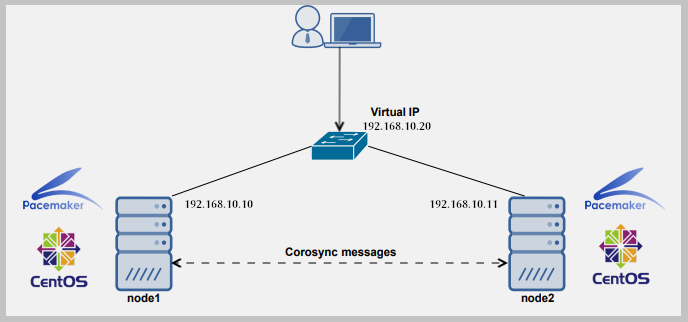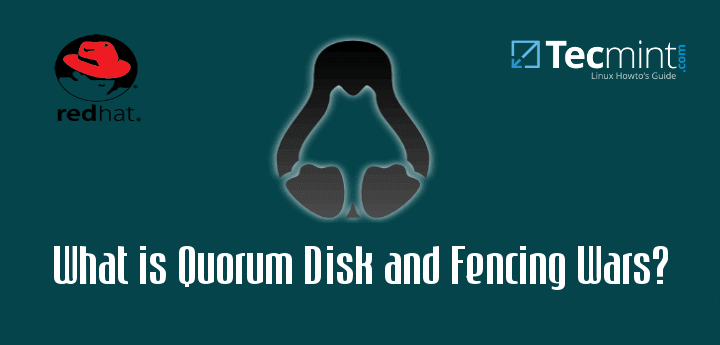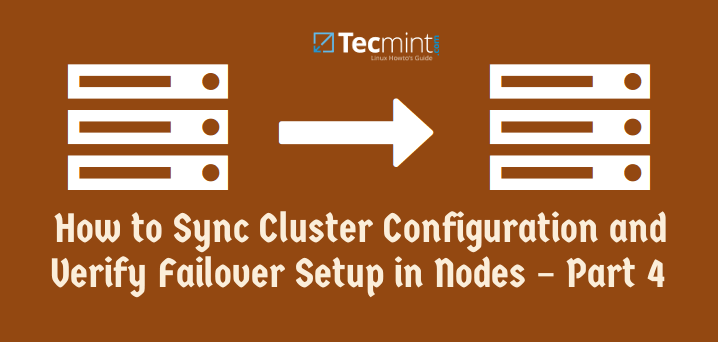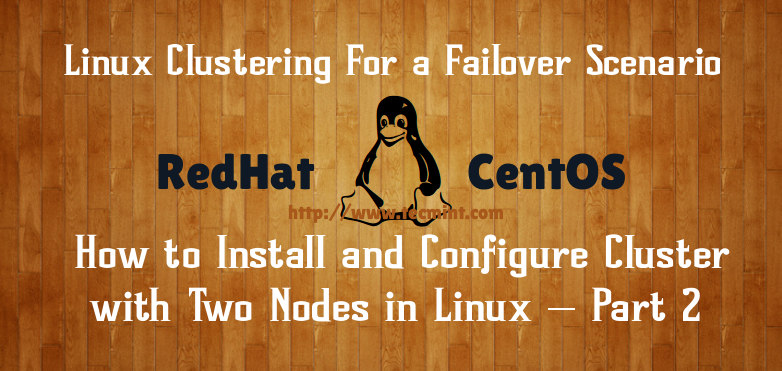Hi all, this time I decided to share my knowledge about Linux clustering with you as a series of guides titled “Linux Clustering For a Failover Scenario“.
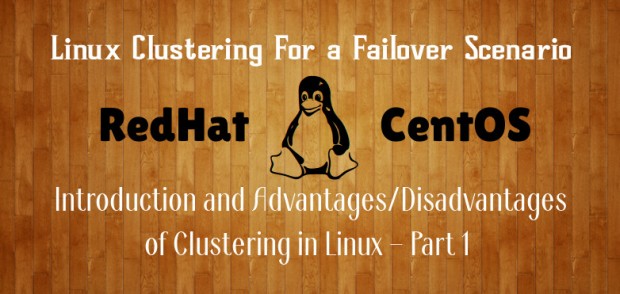
Following are the 4-article series about Clustering in Linux:
First of all, you will need to know what clustering is, how it is used in industry and what kind of advantages and drawbacks it has etc.
What is Clustering
Clustering is establishing connectivity among two or more servers in order to make it work like one. Clustering is a very popular technic among Sys-Engineers that they can cluster servers as a failover system, a load balance system or a parallel processing unit.
By this series of guide, I hope to guide you to create a Linux cluster with two nodes on RedHat/CentOS for a failover scenario.
Since now you have a basic idea of what clustering is, let’s find out what it means when it comes to failover clustering. A failover cluster is a set of servers that works together to maintain the high availability of applications and services.
For an example, if a server fails at some point, another node (server) will take over the load and gives end user no experience of down time. For this kind of scenario, we need at least 2 or 3 servers to make the proper configurations.
I prefer we use 3 servers; one server as the red hat cluster enabled server and others as nodes (back end servers). Let’s look at below diagram for better understanding.
Cluster Server: 172.16.1.250 Hostname: clserver.test.net node01: 172.16.1.222 Hostname: nd01server.test.net node02: 172.16.1.223 Hostname: nd02server.test.net
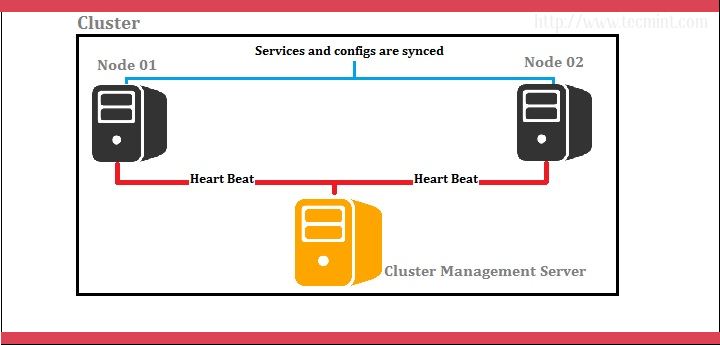
In above scenario, cluster management is done by a separate server and it handles two nodes as shown by the diagram. Cluster management server constantly sends heartbeat signals to both nodes to check whether if anyone is failing. If anyone has failed, the other node takes over the load.
Advantages of Clustering Servers
- Clustering servers is completely a scalable solution. You can add resources to the cluster afterwards.
- If a server in the cluster needs any maintenance, you can do it by stopping it while handing the load over to other servers.
- Among high availability options, clustering takes a special place since it is reliable and easy to configure. In case of a server is having a problem providing the services furthermore, other servers in the cluster can take the load.
Disadvantages of Clustering Servers
- Cost is high. Since the cluster needs good hardware and a design, it will be costly comparing to a non-clustered server management design. Being not cost effective is a main disadvantage of this particular design.
- Since clustering needs more servers and hardware to establish one, monitoring and maintenance is hard. Thus increase the infrastructure.
Now let’s see what kind of packages/installations we need to configure this setup successfully. The following packages/RPMs can be downloaded by rpmfind.net.
- Ricci (ricci-0.16.2-75.el6.x86_64.rpm)
- Luci (luci-0.26.0-63.el6.centos.x86_64.rpm)
- Mod_cluster (modcluster-0.16.2-29.el6.x86_64.rpm)
- CCS (ccs-0.16.2-75.el6_6.2.x86_64.rpm)
- CMAN(cman-3.0.12.1-68.el6.x86_64.rpm)
- Clusterlib (clusterlib-3.0.12.1-68.el6.x86_64.rpm)
Let’s see what each installation does for us and their meanings.
- Ricci is a daemon which used for cluster management and configurations. It distributes/dispatches receiving messages to the nodes configured.
- Luci is a server that runs on the cluster management server and communicates with other multiple nodes. It provides a web interface to make things easier.
- Mod_cluster is a load balancer utility based on httpd services and here it is used to communicate the incoming requests with the underlying nodes.
- CCS is used to create and modify the cluster configuration on remote nodes through ricci. It is also used to start and stop the cluster services.
- CMAN is one of the primary utilities other than ricci and luci for this particular setup, since this acts as the cluster manager. Actually, cman stands for CLUSTER MANAGER. It is a high-availability add-on for RedHat which is distributed among the nodes in the cluster.
Read the article, understand the scenario we’re going to create the solution to, and set the pre-requisites for the implementation. Let’s meet with the Part 2, in our upcoming article, where we learn How to install and create the cluster for the given scenario.
References:
Keep connected with Tecmint for handy and latest How To’s. Stay Tuned up for the part 02 (Linux Servers clustering with 2 Nodes for a failover scenario on RedHAT/CentOS – Creating the cluster) soon.


